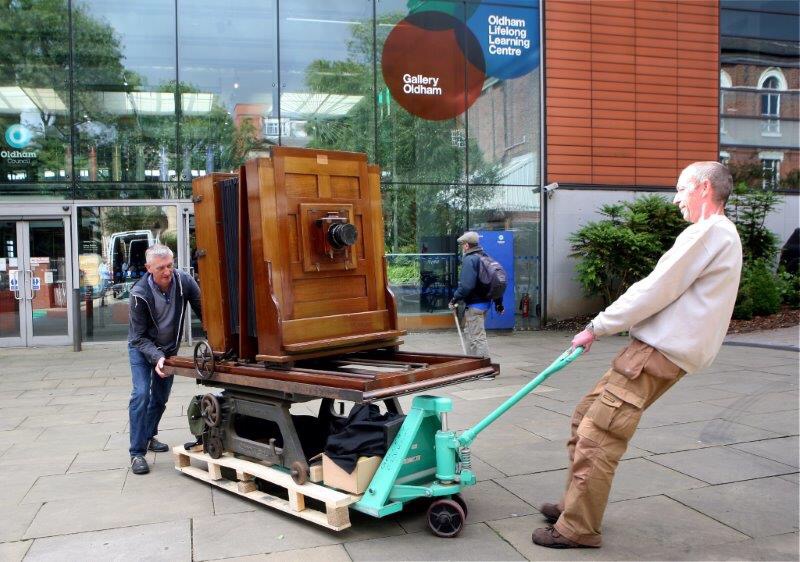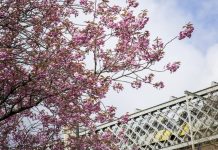The extraordinary Big Big Camera has been in the collections of Gallery Oldham for many years.
Over the last two years artist and photographer Ian Beesley has been working to reuse this industrial relic and photograph the Oldham area in a whole new way. This new exhibition charts his journey and includes some suitably ‘big big’ images.
The camera was originally housed at Rome Mill in Springhead, where it was used by a company manufacturing wallpaper. Rome Mill was built as a cotton spinning mill but was converted to become a wallpaper factory by Lees Paper Staining Co in the early 1930s.
It was at this point that the process camera manufactured by the London firm of Hunter Penrose was first installed. The mill continued to produce wallpaper until 1990 and when it was closed Gallery Oldham acquired the process camera for the collections.
Large cameras like this were made specifically for the printing industry and once installed were probably never moved again. Ian Beesley has worked with Gallery Oldham to get it working again, including specialist restoration of the lens as well as cleaning.
Most importantly Ian had to meet the challenge of using a camera that was designed for huge negatives 24 inches square. His solution was to create a grid which could take a series of smaller negatives resulting in images made up of 20 separate prints.
Thanks to funding from Arts Council England the gallery was able to take the camera out on the road. A transit van is needed to transport a camera this size and with a little modification the van can also double as a darkroom enabling the slides to be reloaded out in the field. It is a laborious process and a maximum of three photographs can be taken in a day.
Photographer Ian Beesley has used the camera to take images across the borough as well as a series of portraits and still lifes. Poet Ian MacMillan has also worked on the project to produce a series of poems in response to the photographs. Both the images and poems will be on display in this new exhibition.
Ian Beesley said: “This exhibition explores some of the aspects of photography that are now being lost in the digital age.
“From the sheer physicality of the equipment, to the delicate relationship with light and the uncertainty of success, this is photography in its purest but most demanding form.”
The exhibition opens on January 21 until April 22. Visitors can also join Ian Beesley for a demonstration of the camera on 15 February at 2pm.







